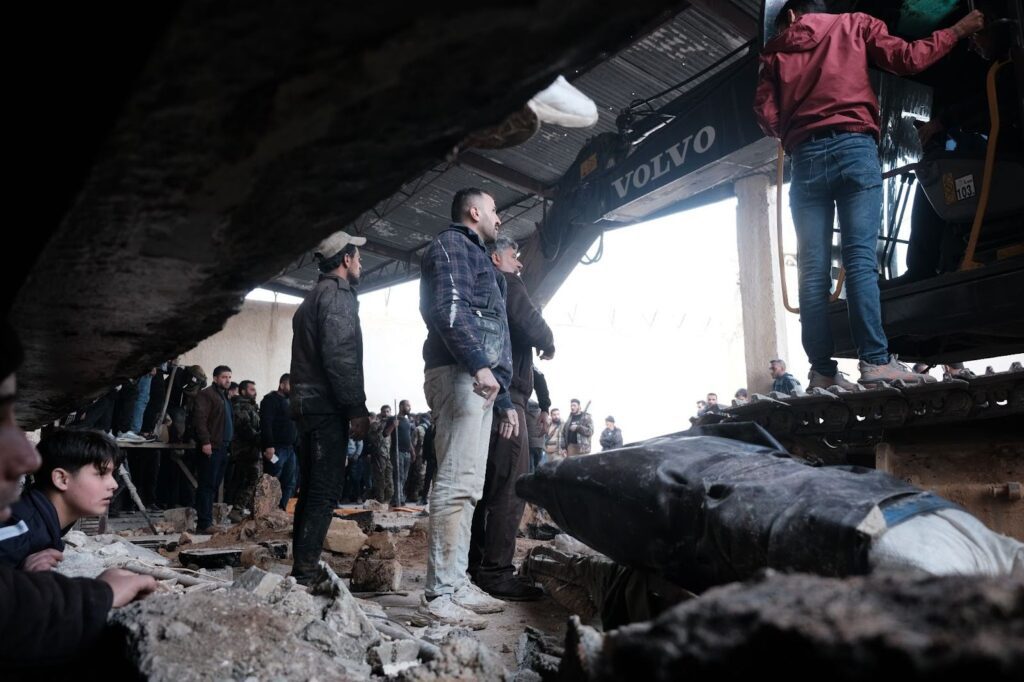On the morning of Sunday, December 8, the unthinkable happened: Bashar al-Assad’s brutal regime fell. For years, his iron grip on Syria had crushed its people, silencing voices and extinguishing lives.
As his regime collapsed, so too did the institutions that symbolized his tyranny – including Sednaya Prison.

Known as the “Human Slaughterhouse,” Sednaya had long been shrouded in secrecy and terror. Its gates, once guarded by Assad’s men, now stood wide open. When word spread, thousands of Syrians poured into the area, hoping to find loved ones who had vanished into its depths.
The initial scenes were ones of relief and jubilation. Families embraced as long-lost prisoners emerged, dazed and frail but alive.

Yet, even as tears of joy flowed, whispers of something darker began to circulate. Rumor had it that not everyone had been freed. Deep beneath the prison, in hidden underground tunnels, more than 1,500 prisoners might still be trapped.
“They were just boys,” Suleiman Hajari, a 40-year-old man, yells: “The regime didn’t need a reason.”
In 2012, three of Suleiman’s relatives – Firas, Alaa, and Rifaat – had been arrested at a government checkpoint, accused of smuggling weapons. Suleiman never believed the charges. That day, they disappeared into Sednaya Prison, and their fate had been a mystery ever since.

As Suleiman stands among the throngs of Syrians swarming the prison, the weight of hope and dread press on him.
“I was told they might be underground,” he says. “I don’t know if they’re alive or not.”
But no one seems to know how to reach the underground tunnels. Families now work tirelessly, searching for answers in the crumbling walls and dark corridors.

In one corner of the prison, an elderly man knells, pounding at the bricks with a large nail. Nearby, a group of men cluster around an excavator, digging into the earth, the sound of metal scraping concrete echoing through the corridors.
Elsewhere, men and women shine their phone flashlights into every crack and crevice, turning over debris and prying at rusted doors.

Execution press, ropes, and acid
Located just 30 kilometers from Damascus, Sednaya was a fortress of fear during Assad’s reign. It held 10,000 to 20,000 prisoners, many of them innocent political prisoners. Activists, journalists, and ordinary Syrians had been dragged there, accused of vague crimes like opposing the regime.
“Many were arrested for nothing,” Suleiman says.

The Syrian Observatory for Human Rights estimates more than 30,000 people died inside its walls – killed by starvation, torture, or execution.
Cobwebs hang in the corners, water drips from leaking pipes, and the floors are slick with filth. In one cell, the wall is scratched with makeshift calendars: Day 1, Day 2, Day 3.

The stench of sewage fills the air. In other parts of the prison, the smell is far worse – death lingering in every breath.
Deeper within the prison, the secrets of Assad’s cruelty are laid bare.
In one basement, there are piles of blood-soaked ropes, once used to strangle prisoners. Beside them stands an execution press. A machine that crushed the bodies of the hanged, reducing them to a few kilograms of bone and flesh. A drain beneath the machine carried away the blood.

What remained of the bodies was taken to another room. Here, salt and acid dissolved the remains completely, leaving no trace.
Nearby, sacks line the walls, filled with body parts – unclaimed, unidentified, and forgotten.
“Fear, that’s all the regime gave us,” Suleiman says.
In another section of the prison, a freezer is hidden behind a heavy iron door. Locals whisper that it once held corpses, stored like meat in a butcher’s shop.

While the atrocities may have ended with Assad’s fall, the search for answers continues. For Suleiman and thousands like him, Sednaya’s open gates are not just a symbol of freedom but a grim reminder of what remains unfinished.
Day and night, families work with excavators, sledgehammers, and their own hands, digging into the earth, determined to uncover the tunnels. Each swing of a hammer is fueled by hope. Hope that they might find their loved ones alive, or at the very least, learn the truth of their fate.


